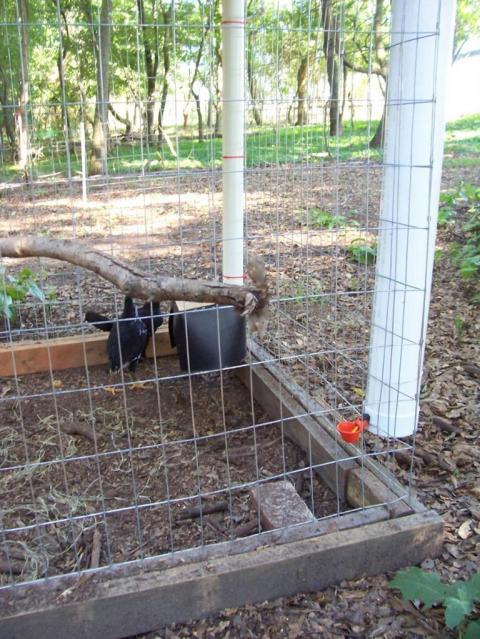I've made both the PVC waterer and now a nipple waterer...and I vote for the nipple waterer.
The PVC device depends completely on being airtight...from every glue joint to the cap on top. And you have to remove the device to fill it. I found mine leaked a lot (not an expert with the glue apparently!) and it was a pain to fill. And the PVC pieces were not cheap, especially the connectors.
Next I took a 5 gallon bucket, installed a simple toilet fill valve in the center bottom of the bucket...I used a bit of silicone adhesive caulk where the valve goes through the bucket bottom, right next to the toilet valves at the store are hoses that have varying sized end connectors...be sure to get a hose that connects to the valve and the other end needs to connect to a garden hose...most likely 3/4", bought the nipples at FarmTek...but available elsewhere, drilled 3/8" holes around the outside edge of the bottom of the bucket, about 5 holes, installed the nipples, connect the hose from the valve to your garden hose...turn on the hose and fill the bucket..voila! Never carry water again. You can leave the hose on a slow trickle. Or you can set the valve level high enough for the birds to have water for the entire day. When I collect eggs in the morning I walk right past the hose bib, turn it on to fill the bucket for the day. During hot weather I turn on the water in the afternoon for a fill as well, just to be sure. In a warm climate or a freezing climate you will want to bury the garden hose carrying the water in the ground so it is neither hot nor freezes in the winter.
And the bucket hangs by a hook installed into a stud of the coop, on an outside wall. I suppose I could move it into the coop for the winter. But my neighbor has had good success with putting a $5 aquarium heater in his to keep the water liquid.
I currently have 18 birds on this watering system. There's a rush for the water nipples when I first let them out in the morning but they are good about sharing, even the roo.



